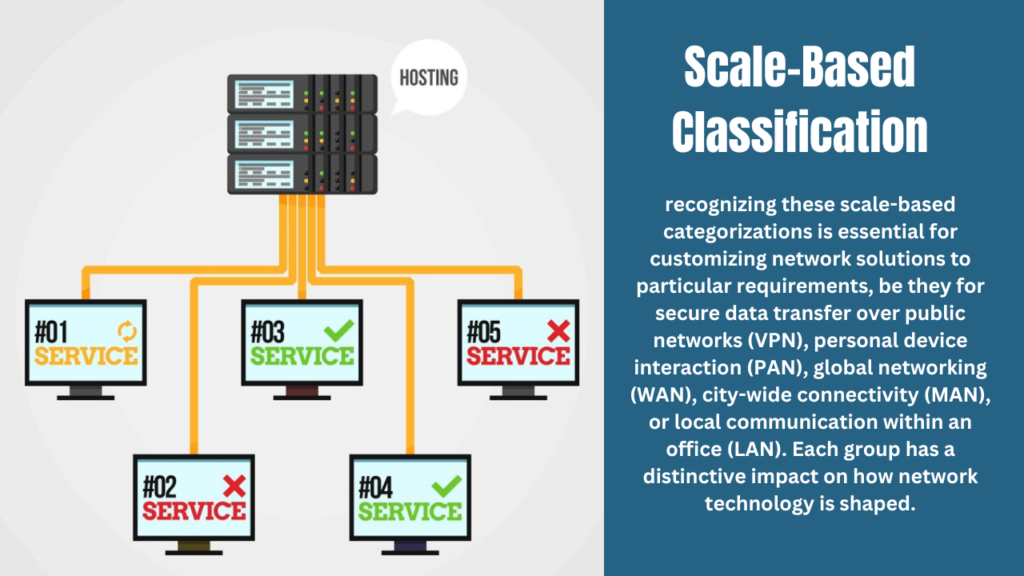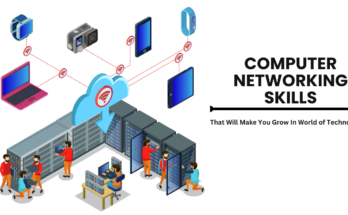A Comprehensive Guide of Network Technology: Types, Advantages, Disadvantages
Introduction:
Network technology serves as the foundation for data interchange, supporting both large and small enterprises and educational institutions. Skilled network technicians are essential to the installation, configuration, and troubleshooting of network systems because they facilitate the smooth exchange of digital data, including audio and video files. By utilizing networking features, users may easily transfer files through several routes and interact via messages according to organizational requirements.

Types of Network Technology
Transmission-Based Classification
Point to Point
In the realm of transmission-based network technology, the Point-to-Point concept involves direct connections between sender and receiver nodes. Data transmission utilizes guided mediums for wired networks and unguided mediums for wireless networks. This configuration ensures efficient communication, as depicted in the accompanying image.
Multi-point
Contrastingly, Multi-point connections interlink several nodes directly through a common medium, either time-sharing or spatially shared. Time-sharing grants each node a dedicated time slot for communication, while spatially shared connections facilitate simultaneous communication between nodes.
Scale-Based Classification
recognizing these scale-based categorizations is essential for customizing network solutions to particular requirements, be they for secure data transfer over public networks (VPN), personal device interaction (PAN), global networking (WAN), city-wide connectivity (MAN), or local communication within an office (LAN). Each group has a distinctive impact on how network technology is shaped.
LAN (Local Area Network)
LAN, also known as IEEE 802 network, connects devices like computers, laptops, and mobiles within a small range, typically ranging from 100m to 10km. The network’s properties hinge on factors such as users, speed, range, and error rate. Key components include peripheral devices, a central hub, various cables, nodes, and a Network Interface Card (NIC).
MAN (Metropolitan Area Network)
WAN (Wide Area Network)
PAN (Personal Area Network)
A Personal Area Network (PAN) is a type of network that enables users to establish connections with adjacent devices within a few meters, usually. It may be set up wirelessly or with physical cords, giving users flexibility and simple device interaction. PANs simplify data interchange within this constrained geographical scope, hence improving the convenience of personal device communication.
VPN (Virtual Private Network)
VPN operates virtually on a public network, establishing a secure, encrypted link over a less-secure network like the internet. Tunneling protocols encrypt and decrypt data at the sender and receiver ends. A VPN, or Virtual Private Network, functions by creating a secure and encrypted connection on a public network, typically the internet. This means that even though you’re using a less-secure network, the VPN ensures that your data remains protected. Tunneling protocols play a key role in this process by encrypting and decrypting data at both the sender and receiver ends, adding an extra layer of security to your online activities.

Advantages of Network Technology
- Flexibility: Network technology provides unparalleled flexibility, adapting to evolving needs.
- Improved Communication & Accessibility: It enhances communication and the accessibility of information.
- Convenient Resource Sharing: Facilitates seamless sharing of files and resources.
- Cost-Effective: It offers cost-effective solutions for connectivity.
- Enhanced Storage Capacity: Network technology contributes to increased storage capacity.
Disadvantages of Network Technology
- Lack of Independence & Robustness: Dependency on network infrastructure may lead to vulnerabilities.
- Security Difficulties: Network technology poses security challenges that need to be addressed.
- Vulnerability to Viruses & Malware: The interconnected nature makes networks susceptible to malicious entities.
- Requirement for Skilled Operators: Efficient operation demands skilled professionals.
- Exclusive Set-Up: Establishing a network requires a specific and exclusive configuration.
Conclusion:
In conclusion, for smooth digital connectivity, it is essential to fully understand and utilize the possibilities of network technology. It is clear from weighing the benefits and drawbacks that a well-designed network has the power to revolutionize data transmission and communication.




